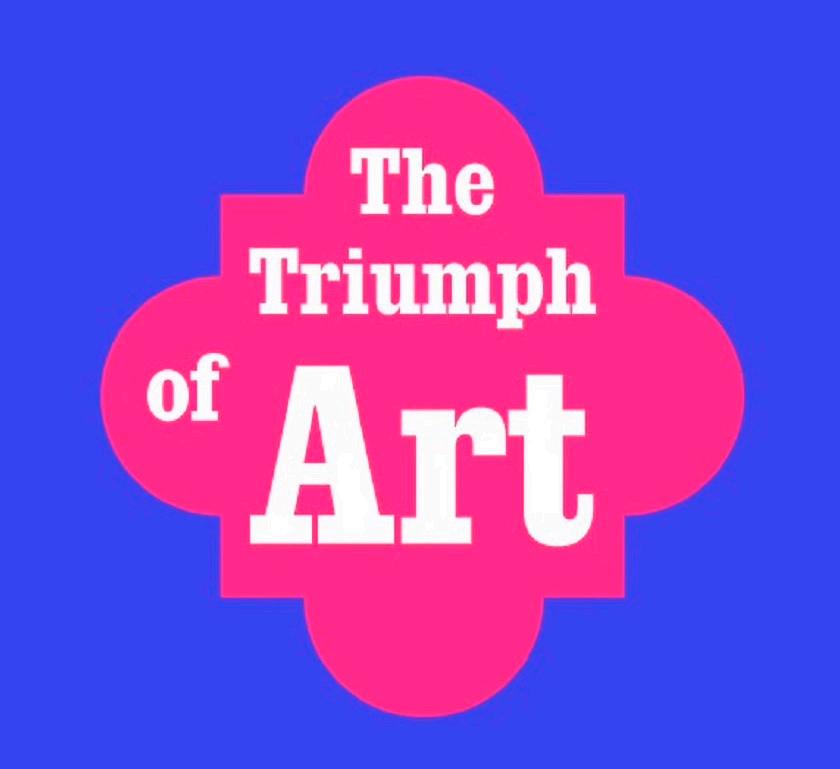

The Indigo Pavilion
Designed and built by students from BSc Architecture Unit 9 and MArch Design for Performance & Interaction
The Bartlett School of Architecture
The Indigo Pavilion
investigates the contested histories of Trafalgar Square and the National Gallery through the story of Indigo, the valuable blue dye that played a significant role in British colonial history.
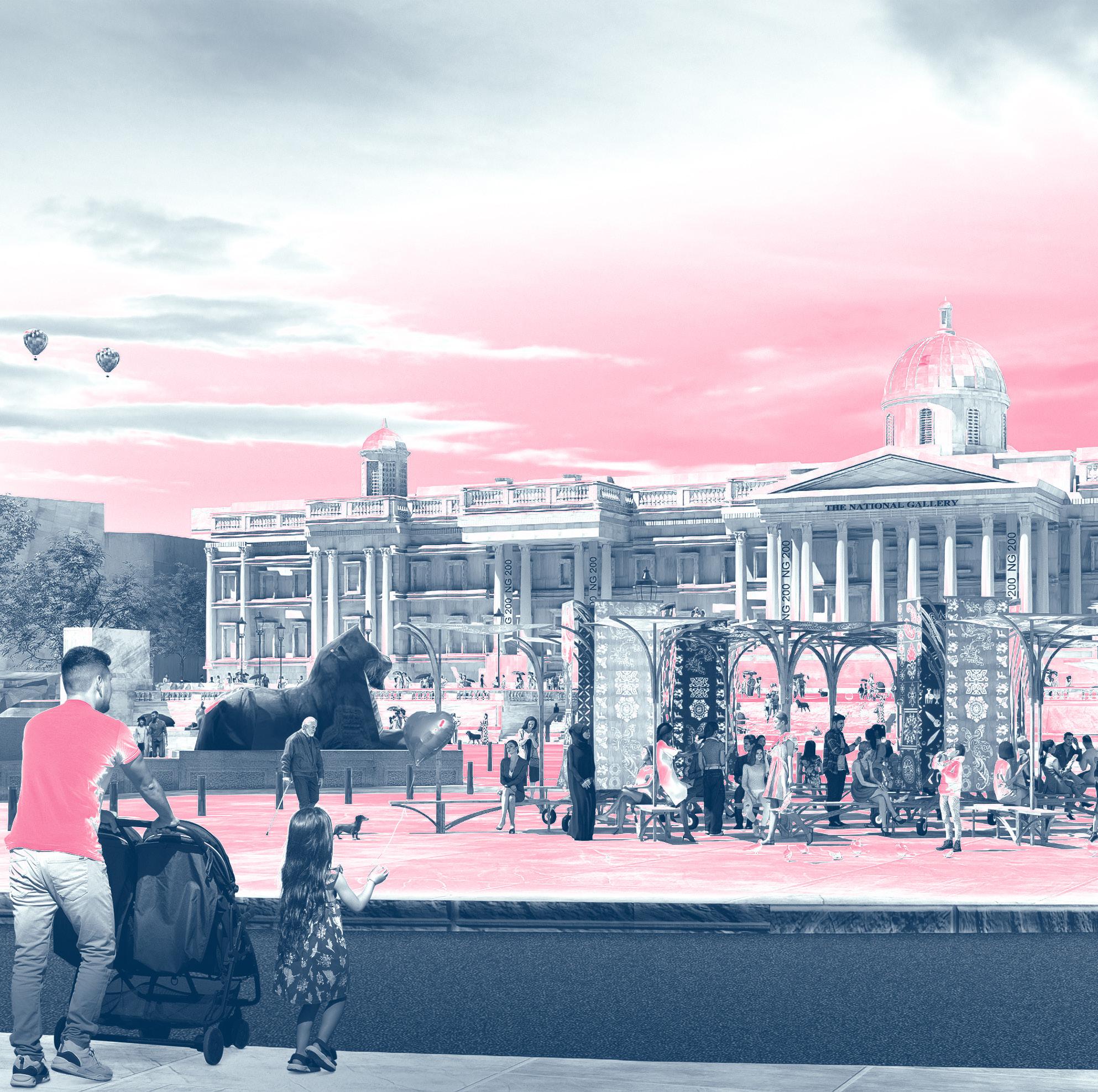
While serving as a major export crop in the British colonies and a key source of revenue for the East India Company in India, indigo cultivation often came at the expense of local populations through forced labour, debt peonage, and land dispossession. Closely entwined into this uncomfortable reality is the rich catalyst that indigo has been to the tradition of textile craft around the world.
The Indigo Pavilion acknowledges the difficult place of indigo in the history of colonialism while celebrating its craft, specifically Adire, Ajrak/Kalamkari, Katazome and Nayin (indigo traditions from Nigeria, India, Japan and China respectively, as personally represented by the participating students).
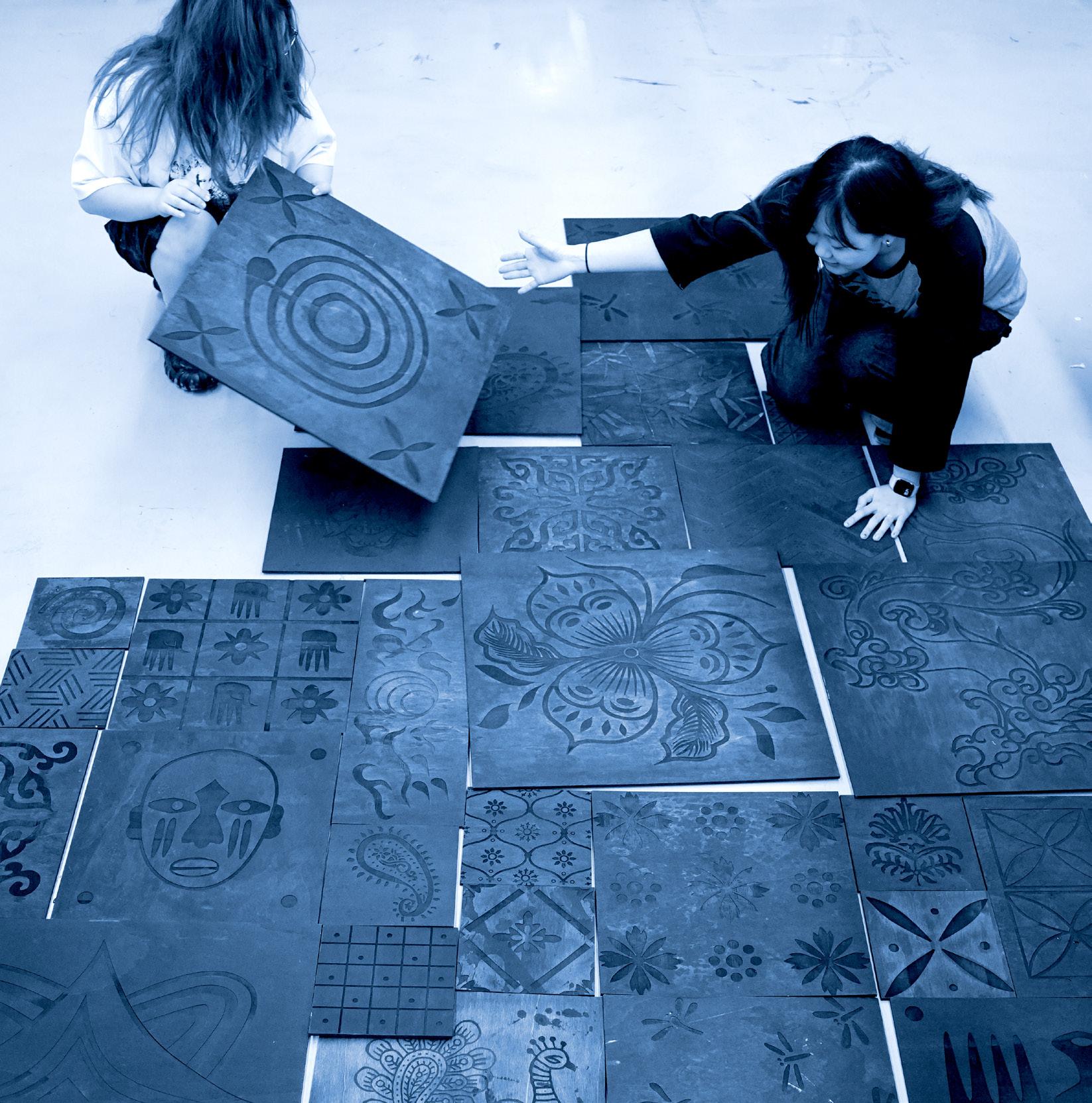
Displaying patterns interpreted from traditional motifs found in the different indigo crafts, the printed fabric is hung on a gently curved timber structure, enabling the fabric as procession device during the Whitehall parade, and then transforming into a shade structure on Trafalgar Square.

The timber structure itself is constructed from a hybrid of digital fabrication and timber hand craft , using a traditional steam bending technique, using locally sourced ash from fallen urban trees.
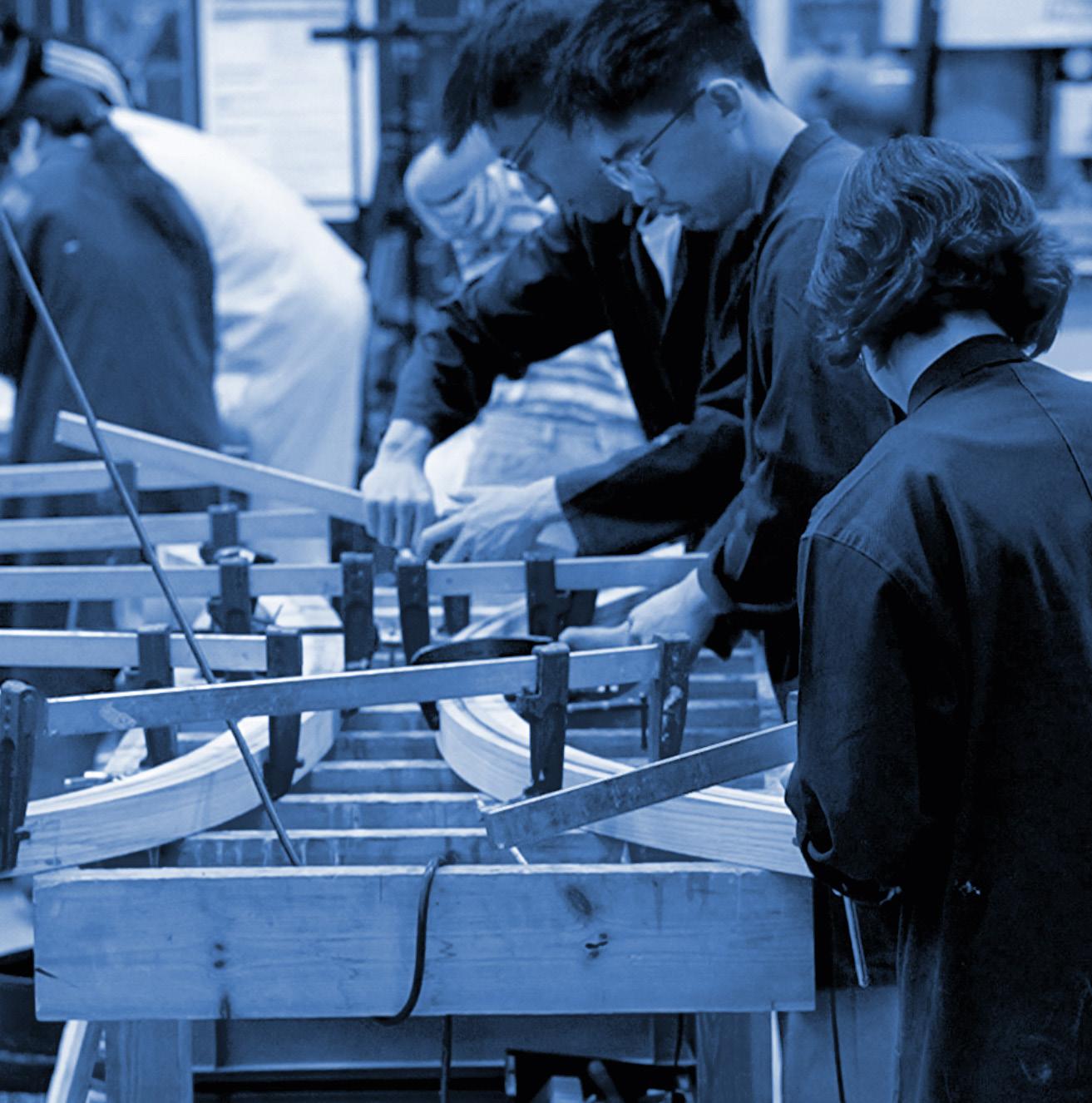
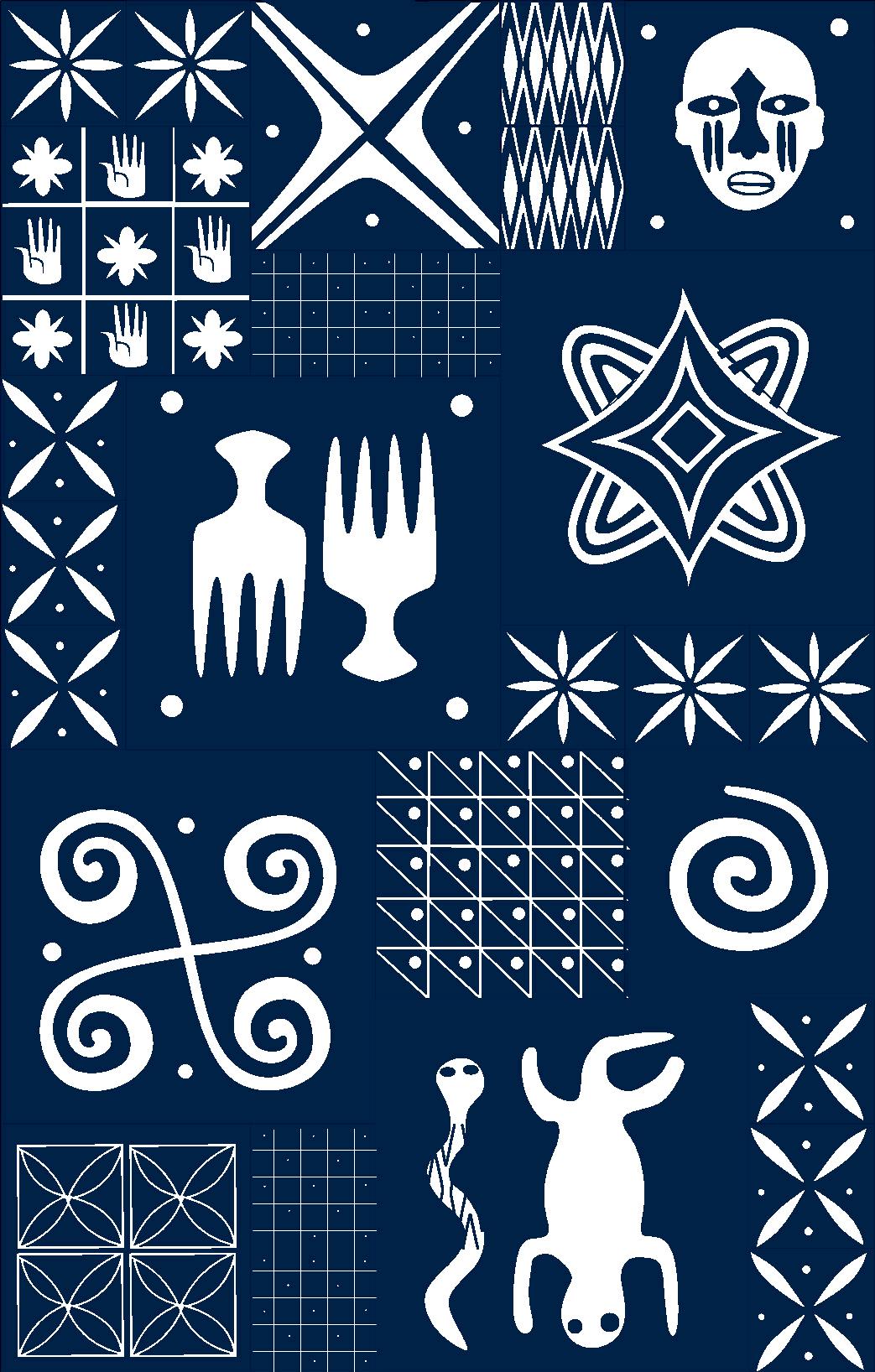
Àdìrẹ
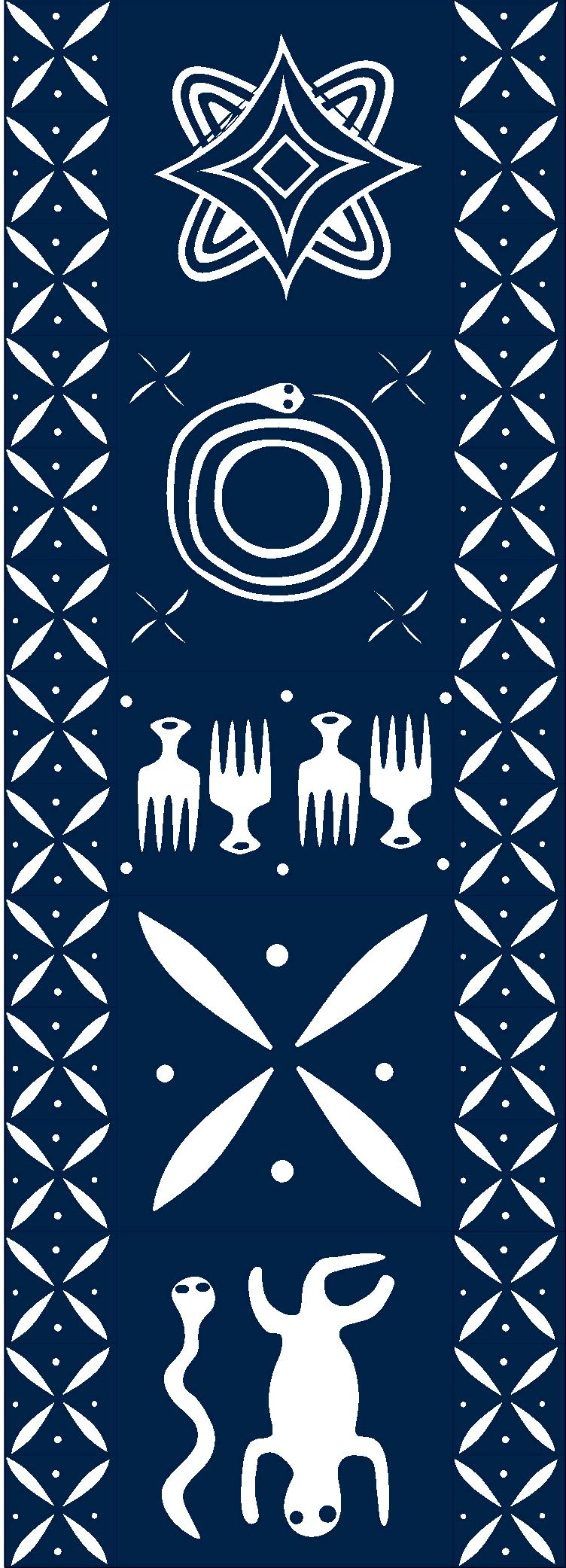

Ewé ẹ̀gẹ́
Stands for peace, serenity, and ongoing good fortune, and resourcefulness; every part of the cassava plant is useful.
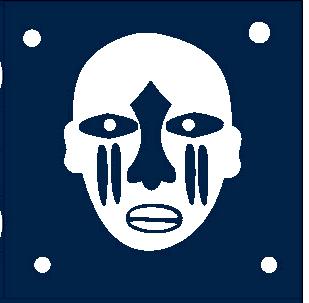
Ìlà kíkọ Facial scarification

Eléwé mẹ́rin
Four leaved plant
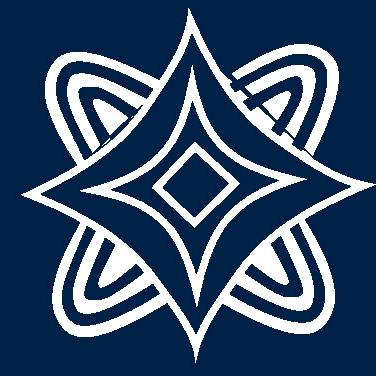
Dagin arewa Star of the North
Emblem of Hausa identity and culture

Ejò & Ọmọnílé
Snake & Wall gecko
A symbol of peace in the home, omonílé (literally ‘heir of the house owner’ as they stay inside while other lizards stay on the house outer walls.
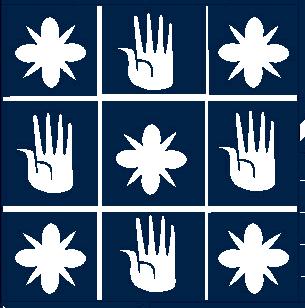
Palm
The proverb ‘àtẹ́lẹwọ́ ẹni kìí tanni jẹ’ our palms never deceive us meaning what is achieved by handiwork is what endures.
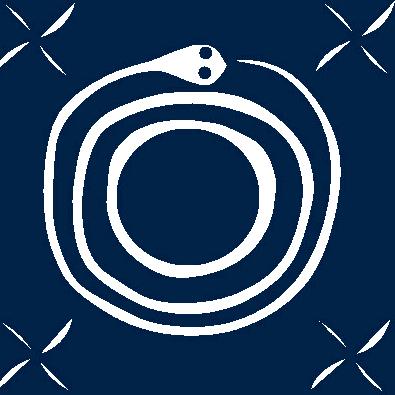
Ejò Snake
The representation of the curled snake denotes the cyclical paradigm of the reincarnation belief.
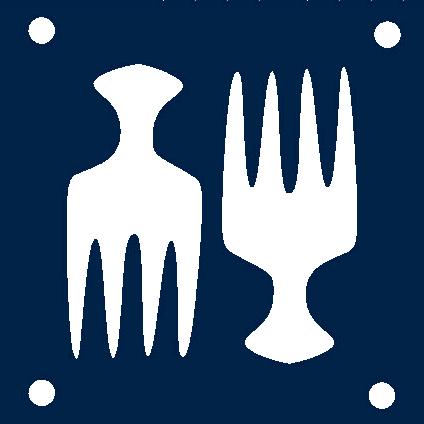
Òòyà Comb
Used for partitioning hair in preparation for braiding. Derived from the verb yà (to separate) when sent as a gift symbolises the separation of a partnership

Oríta mẹ́rin Crossroads
A junction of four paths symbolic of liminal spaces which represent decision, and a common site for ẹbọ (offerings).
Cassava leaf
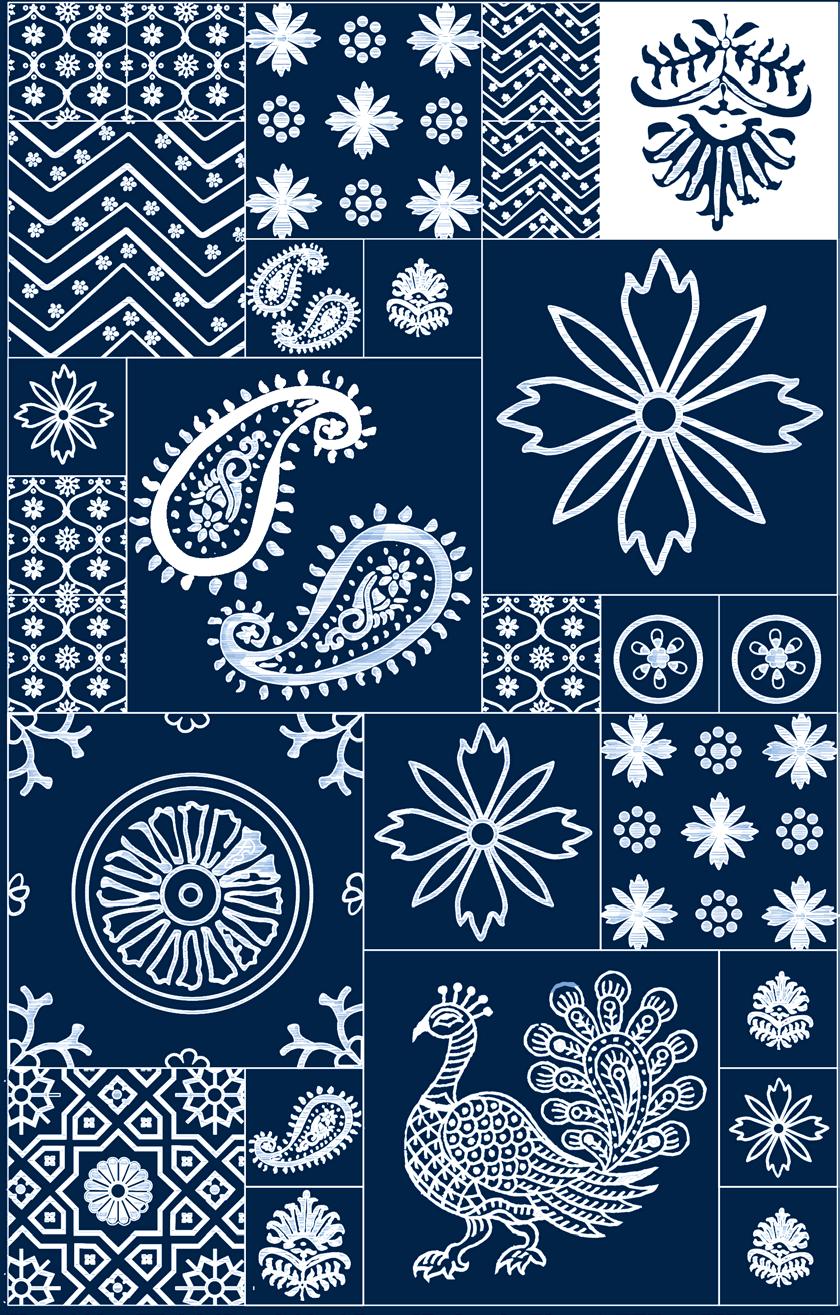
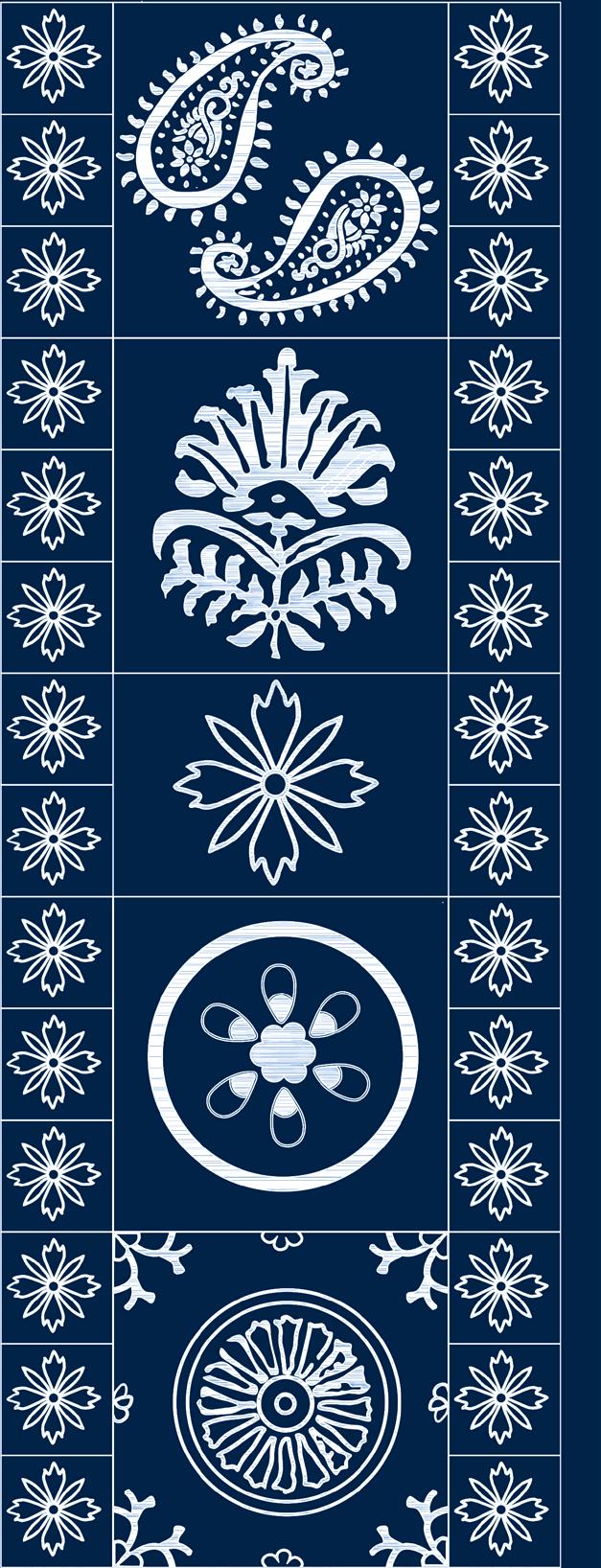
Ajrak & Kalamkari
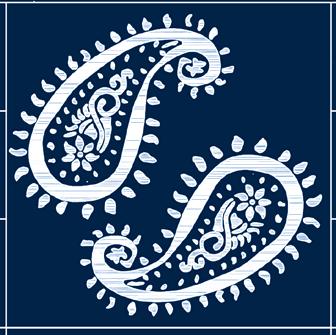
Bhutas
Mango/Paisley
Bhutas originated as a sacred symbol of life, fertility, and spiritual energy. During the British colonial rule of India, the pattern spread to Europe and was known as Paisley.
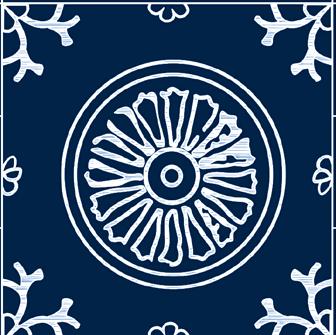
Dharma
A sacred wheel symbol representing dharma, order, and the cycle of life.

A floral lattice pattern featuring regularly arranged blossoms, symbolizing visual order, balance, and crafted beauty.
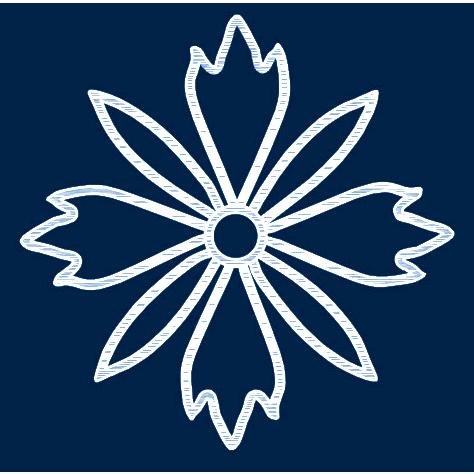
Eight-Petal Flower
Lotus-inspired motif symbolising purity, balance, and awakening.
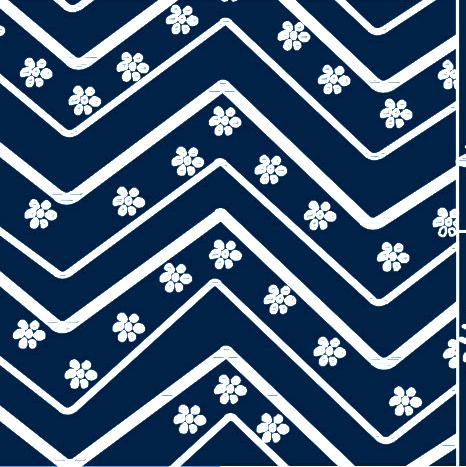
Chevron repeat
A chevron pattern with rhythmic flow, symbolizing energy and protection.
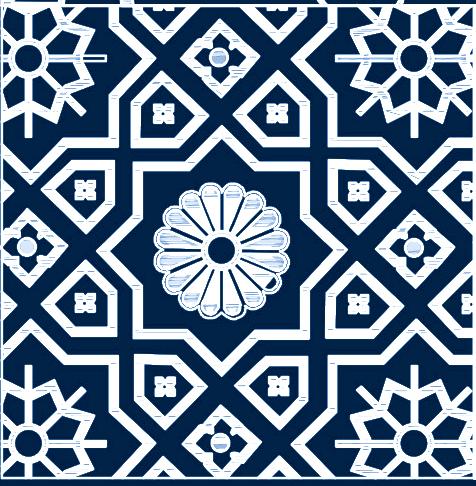
A mandala-like geometric grid symbolising spiritual focus and cosmic order.
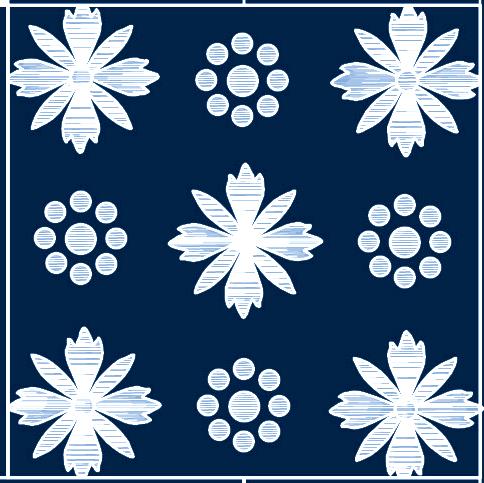
Daisy Cluster
Repeating daisy-like motif symbolizing nature, harmony, and hope.
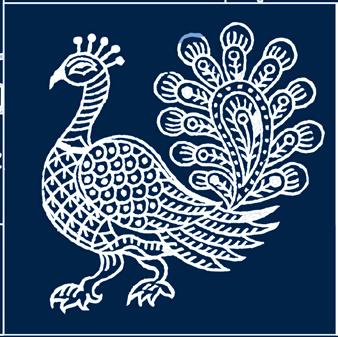
Mayura
Peacock
Intricate symmetrical lines to depict the sacred and auspicious peacock, serving as a key element in Indian traditional art and religious symbolism
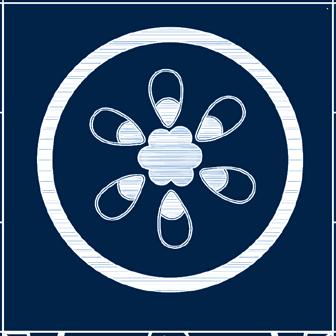
Symbol of purity and spiritual awakening.
Chakra
Lotus Petal
Mandala Grid
Floral Trellis
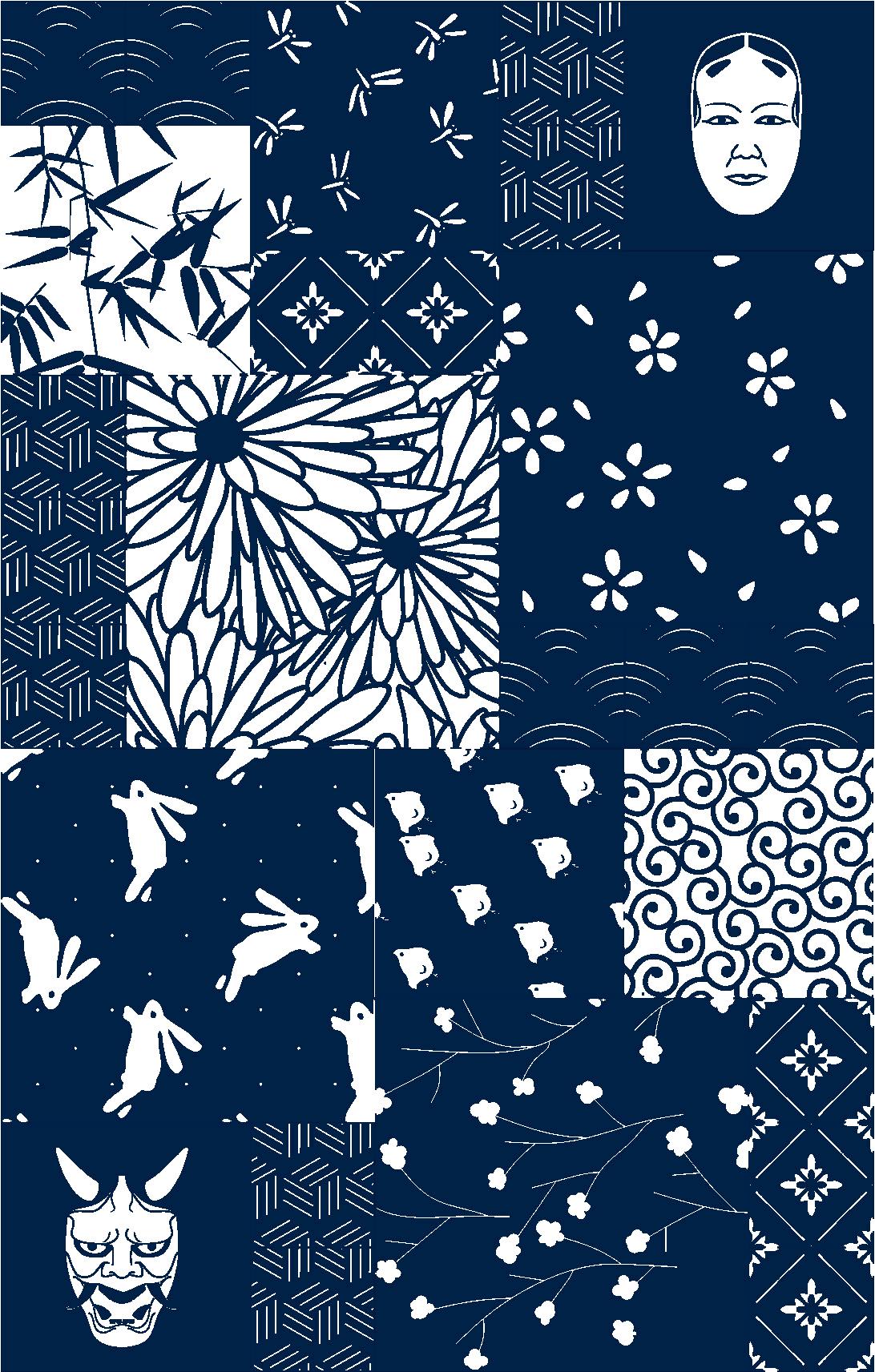
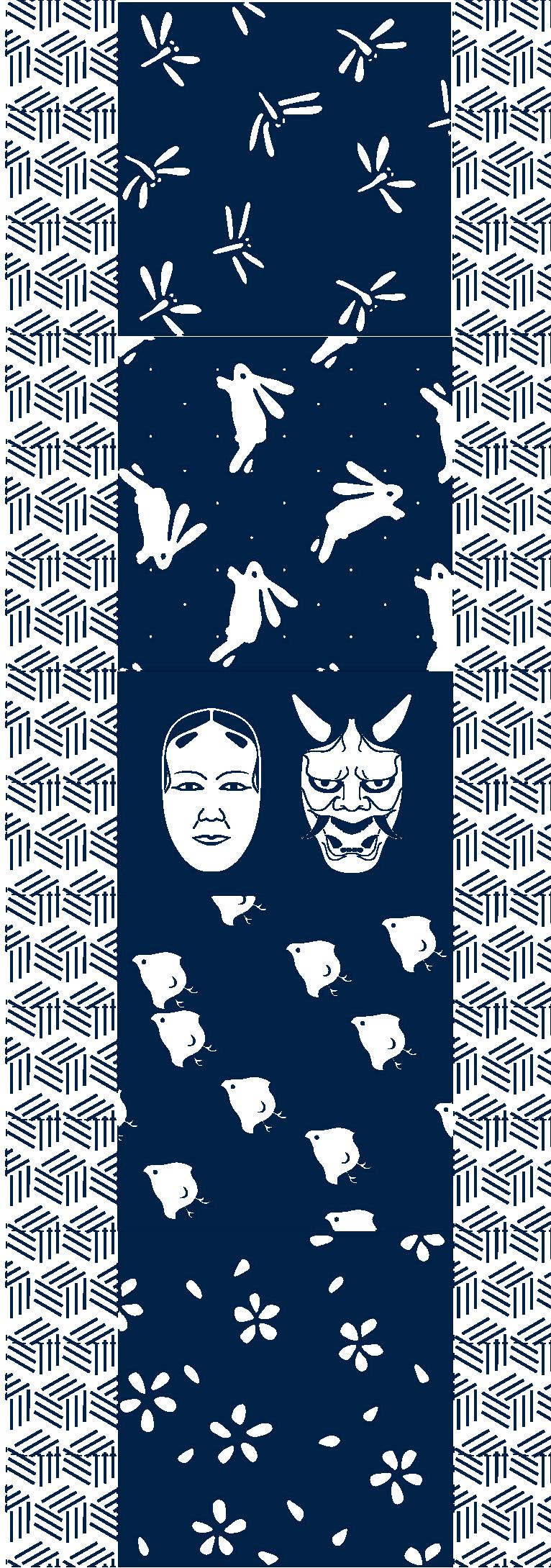
Katazome
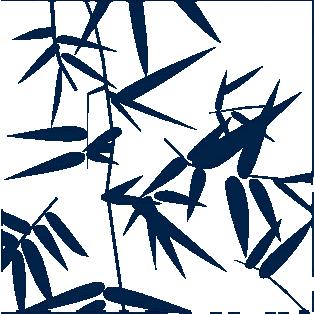
たけもん
Take-mon
Represents resilience, uprightness, and longevity.
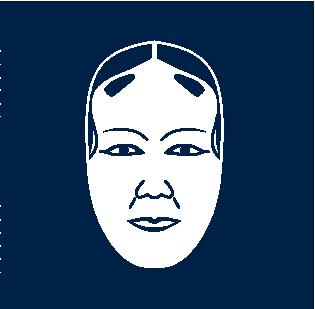
でいがん
Deigan
A woman carries the seeds of supernatural transformation, simultaneously signalling a demonic spirit that will soon manifest.
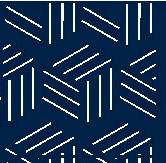
きっこう
Kikkō
Symbolises longevity, strength, and good fortune

Sakulamon
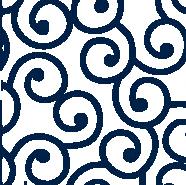
Karakusa-mon
Represents fleeting beauty, life’s brilliance, and celebration. からくさもんよう

はんにゃ
Hannya
Although “Hannya” originally represents a vengeful female spirit in Noh theater, in modern folk and symbolic culture it is often turned into a protective charm.

Hanabishi
Symbolises elegance, nobility, and cultural continuity
Represents prosperity, growth, and continuity.
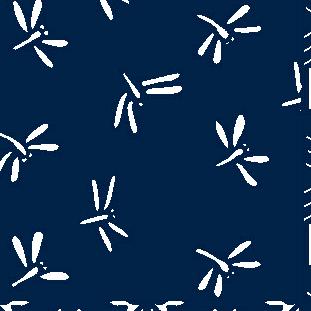
とんぼもんよう
Tonbo-mon
Represents courage and national spirit.

Seigaiha
Stands for peace, serenity, and ongoing good fortune.
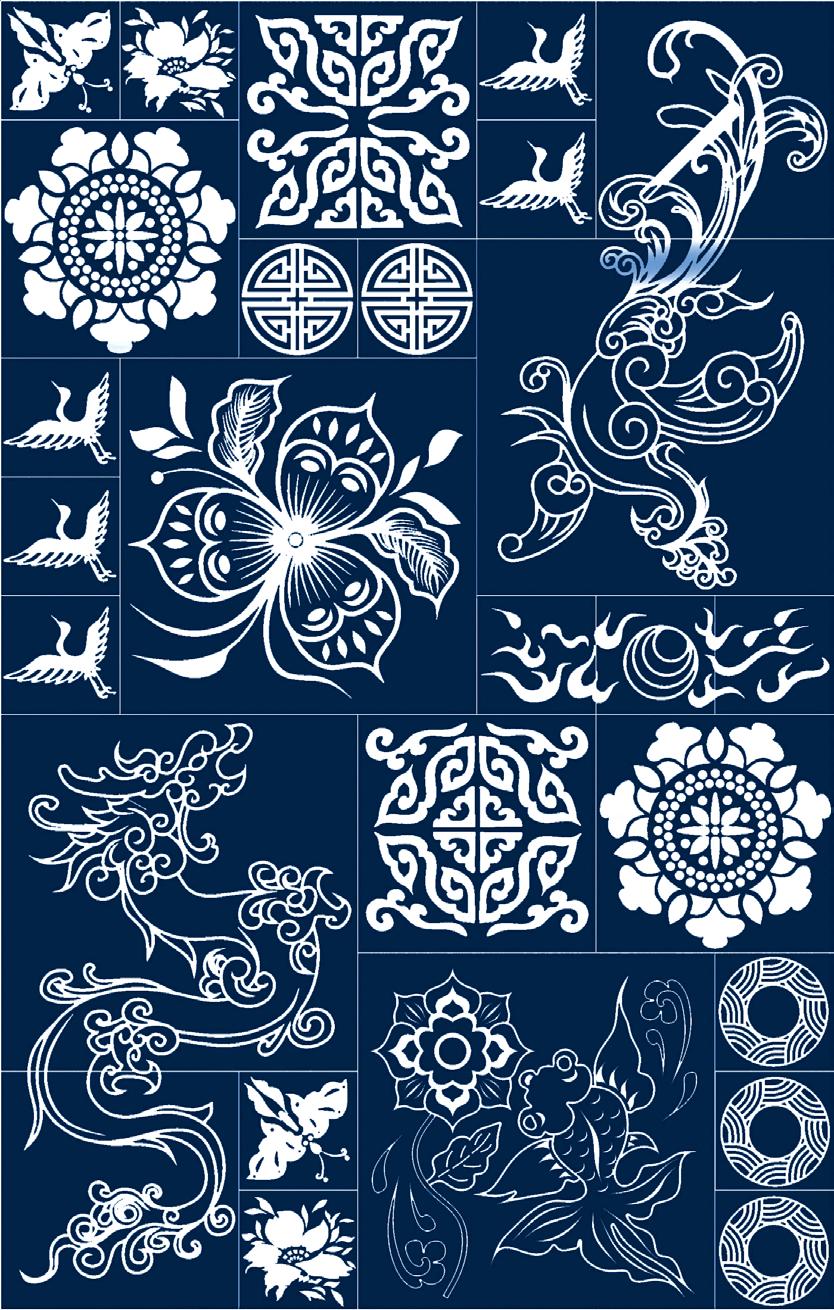
Nà Yìn
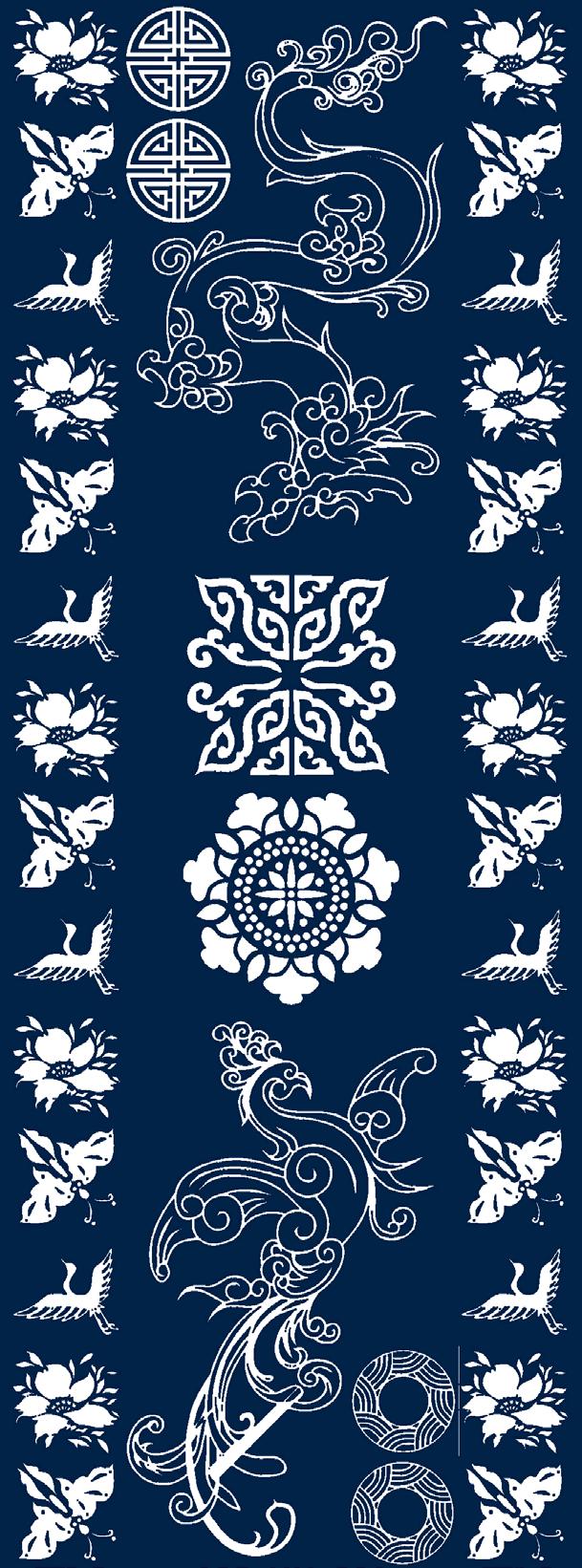
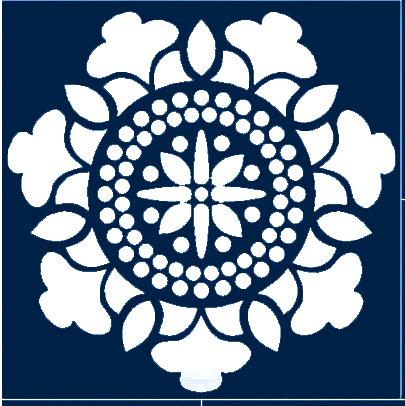
团花纹
Floral Roundel
Symmetrically arranged flowers in a circular form, symbolizing unity, harmony, prosperity, and auspiciousness.

蝴蝶纹
Butterfly pattern
Symbolises love, joy, longevity, and freedom. They often appear in pairs and are associated with happiness and auspiciousness.
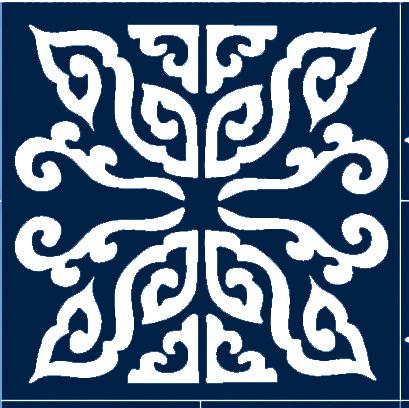
吉祥云纹
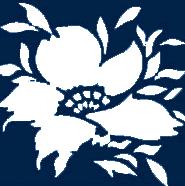
牡丹纹
Blooming Peony
Featuring the "king of flowers," symbolizes wealth, honour, beauty, and prosperity, and is widely used in traditional clothing and decorative arts.

飞鹤纹
Flying Crane
Symbolises longevity, nobility, and spiritual elevation, with the soaring crane representing rising status, purity, and transcendence.

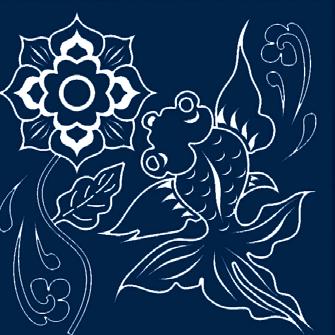
金鱼戏莲
Goldfish Playing Among Lotuses
Symbolises abundance year after year, prosperity, harmonious well-being, with auspicious homophonic meanings.
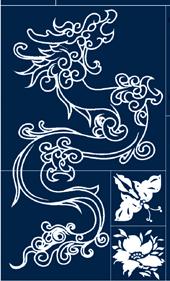
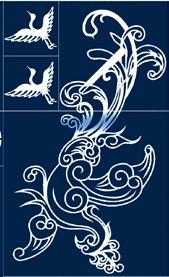
龙纹 凤纹
Dragon Phoenix
Symbolises the harmonious union of yin and yang, marital bliss, and imperial grace, and to convey blessings of prosperity and harmony.

Ruyi
Wanshou
Yunshui

Artist: Jeremy Deller
National Gallery: Emily Stone, Daniel Herrmann
ABA Engineering: Megan Morrison
LS Events: Alice Lockwood, Helen Mugridge
Bartlett Workshop (BMADE): Mark Burrows, Melis Van Den Berg, Hamish Veitch
Unit 9 Concept Design Winners: Ethan Chen, Stan Luo, John Ogunyiluka
Design for Performance + Interaction: Students: Kobe Guo, Lane Finley, Ziwei Jiang, Guanjia Li, Cuihong Mao, Zhen Wang; Bartlett Tutors: Parker Heyl, Jessica In, Chee-Kit Lai
Thanks to: Grace Hailstone (NG), Christine Riding (NG), Alessandro Sorenti (NG), Giles Nartey (Bartlett), Pranayita Myadam (Bartlett), Lauren Gillet (Bartlett Here East), Refel Ismail (UCL), Fiona Zisch (Bartlett)
@guanjia_henry
@yanxunsanwenyu000
@kobeguo.kebi
@amber.wang_00
@_switchinlanes
CuihongMao
@sluoarchi
@ethanc_archi
@john.ogunyiluka
@shedrawswithcode
@parkerheyl
@mobilestudioarchitects
@design.unit9
@bartlett_dfpi
@bartlettarchucl
